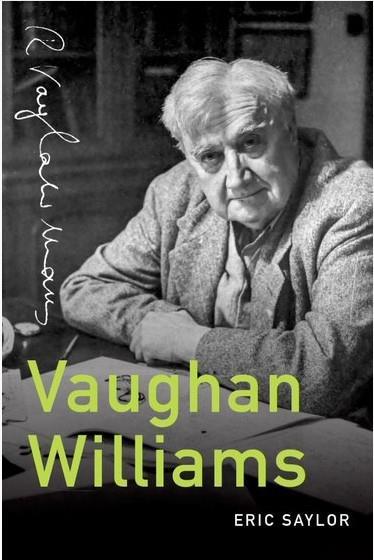Julian Haylock reviews Eric Saylor’s biography of the English composer, published to mark the 150th anniversary of his birth

Vaughan Williams
Eric Saylor
360PP ISBN 9780190918569
OXFORD UNIVERSITY PRESS £22.99
It is one of the more curious aspects of the post-Beethovenian musical world that composers tend to be rated more highly for their work on the ‘dark side’ and for chest-beating heroics. As a result, much English and French music (from which Vaughan Williams learnt a great deal) still tends to be underappreciated. Yet VW expressed himself with a profound individuality, which is in part why general histories struggle to find a coherent place for him in the stylistic time-continuum. Now, thanks to Eric Saylor’s well-researched biography, we can appreciate his achievement from a more balanced and informed perspective.
Particularly illuminating is the light cast on VW’s early music, once thought to consist almost entirely of songs and hymns. Readers of The Strad will already be aware, for example, of the run of chamber works he produced between the late 1890s and early 1900s, including a C minor String Quartet and two differently scored piano quintets, which had remained largely hidden from view until Faber published them in 2002. OUP released the early orchestral Serenade and Bucolic Suite ten years later, and here we gain a greater sense of the mature composer in the making. Saylor’s observations of VW’s formative years are deftly handled, pointing out their inevitable indebtedness to the era’s creative big guns. Yet perhaps its most profound value is the way it emphasises the startling rate of stylistic acceleration that occurred subsequently, starting with 1907’s Towards the Unknown Region, through 1909’s On Wenlock Edge and A Sea Symphony of the following year. Examining the music of just five years before, there is little to suggest (even with hindsight) that VW would have been remotely capable of such a work.
Video: Happy birthday, Ralph Vaughan Williams!
Read: 4 reasons why I love Vaughan Williams
Video: Dame Diana Rigg presents Vaughan Williams’s The Lark Ascending
Indeed, it is Saylor’s insightful handling of VW’s music in the context of his life and times that is the book’s greatest strength. He illuminates The Lark Ascending’s originality and its ‘soaring to picturesque heights that few in the post-war world still dared’, and points out the Concerto Accademico’s ‘many violations of precepts expected from a truly “academic” work’. Along the way a very different composer emerges, aeons away from the avuncular, grandfatherly figure that is often portrayed, but rather full of creative vim, energy and passion, tirelessly pushing back the boundaries of what an English composer could and might aspire to.
JULIAN HAYLOCK











































No comments yet